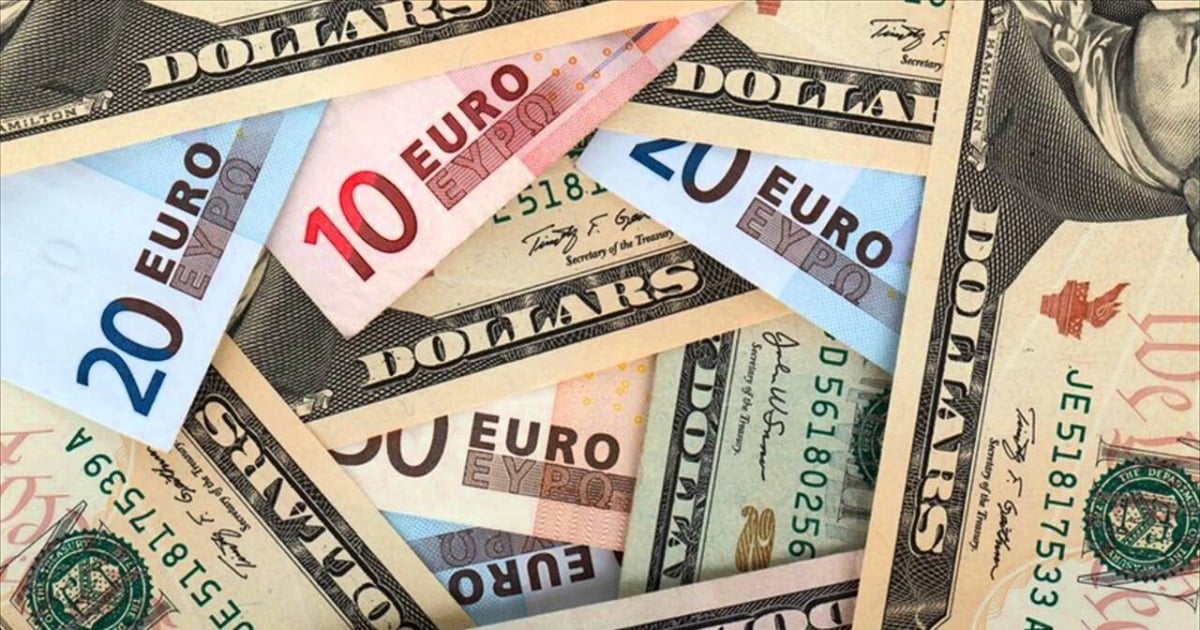The independent media outlet elToque, which has been documenting the fluctuations in the value of reference currencies in Cuba's informal market since 2019, has given its opinion on the sharp drop in the value of the dollar, euro, and MLC over the past week. "The announcement of the resumption of remittance services to the island through Western Union (on May 9) and the approach to a closed value (400 CUP x 1 USD) could have influenced expectations, the so-called 'market sentiment,'" noted economist Pavel Vidal Alejandro in an extensive article published this Tuesday.
The economist pointed out that a "new balance in the consensus and attitude of market participants" has been formed. In other words, "an increasing number of people began to consider that the exchange rates were excessively high and opted to sell before a possible drop," which boosted the supply.
This perspective was also suggested this week by Pedro Monreal when questioned on Twitter about the topic. Pavel Vidal assured that since mid-May, coinciding with the start of the decline of the three reference currencies, there was a notable increase in the supply of currencies in the monitored virtual spaces.
Additionally, elToque noted that it is natural for "temporary corrections to occur after an extended bull market period." It explained that since 2022, there have been six sharp and consecutive drops in currency values, which in some cases have lasted weeks but then have recovered.
Is the Cuban Peso Really Appreciating?
Pavel Vidal Alejandro believes that the fundamental factors explaining the internal and external imbalances of the Cuban economy have not changed, and therefore "the current inflection of the rate should not be associated with a trend change."
"Over the past four years, the value of the Cuban peso has shown a permanent depreciation trend consistent with the high fiscal deficit, the excessive issuance of Cuban pesos, the contraction of national production and exports, the growing dependence on imported products and inputs, dollarization, emigration, and widespread and persistent inflation in the markets," he explained, indicating that the crisis continues and there is no reason for the peso to change its devaluation trend.
Furthermore, tourism growth has slowed, goods exports fell short of expectations, and the sugar harvest has failed to stabilize production. As if that wasn't enough, by the end of February this year, the state's budget deficit accumulated over 20 billion pesos.
Additionally, there is a "chronic dollar shortage against the constant and substantial expansion of the amount of Cuban pesos in circulation," which consolidates the upward trend in the informal exchange rate trajectory.
Is it possible to predict what will happen with certainty? elToque finds this challenging because "there are many informational gaps that make it difficult to measure the magnitude and evolution of the current crisis more precisely." "Moreover, the government's strategy to reactivate and stabilize the economy is not well understood. With such opacity in economic data and policies, it is more complex to approximate the market equilibrium value. It should not be surprising that the informal exchange rate trajectory falls victim to unnecessary uncertainty," elToque emphasized, noting that the currency decline occurred without pausing the publication of the report, confirming "the autonomy and randomness with which the informal peso value moves."
"Only the government has the economic policy tools (fiscal and monetary, especially) and can implement reforms to stabilize and change the exchange rate trajectory. Until it does, the exchange rate will continue to reflect the price of stagnation, continuity, and uncertainty," they concluded.
Another Perspective on the Currency Plummet in Cuba
Cuban economist Emilio Morales stated this week in an interview with CiberCuba that it is "impossible" for the Cuban peso to have revalued on its own, gaining ground against the dollar as it has in recent days, attributing the drop in informal currency prices to maneuvers by UCI (University of Informatics Sciences) cyberclarias on the island.
According to Emilio Morales, the only news that could revalue the peso by itself is "that the government fell," as it would finally open the hope for a system change.
Morales also dismissed the idea that the drop in the dollar, euro, and MLC prices in Cuba is due to a supposed injection of currencies into the informal market. "Where are they going to get the currencies if they have daily blackouts because they can't buy oil? It would have to be a multi-million-dollar injection, and they don't have it," he questioned.
When asked if there is any mechanism other than the intervention of the cyberclarias to control inflation this week, Morales responded firmly. "That's a lie. Cuba does not produce. Where is the productive support for that to happen? It will probably recover its course and surpass the 400 pesos barrier," he asserted.
Questions and Answers about Currency Value Decline in Cuba
To better understand the recent decline in currency values in Cuba, here are some frequently asked questions and their answers.
Why did the value of the dollar, euro, and MLC drop in Cuba recently?
The announcement of the resumption of remittance services through Western Union and the approach to a closed value of 400 CUP per USD influenced market sentiment, leading to increased supply and a resulting drop in value.
Is the Cuban peso actually appreciating?
Economists believe that the fundamental issues causing internal and external imbalances in the Cuban economy have not changed, and therefore the recent appreciation of the peso is not indicative of a long-term trend.
What factors contribute to the depreciating trend of the Cuban peso?
The depreciating trend is driven by a high fiscal deficit, excessive issuance of Cuban pesos, contraction of national production and exports, increasing dependence on imports, dollarization, emigration, and persistent inflation.
